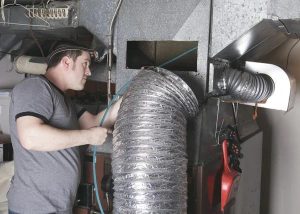
Construction health and safety are integral aspects of any construction project. These measures not only ensure the wellbeing of workers but also contribute significantly to productivity and compliance with industry regulations. A safe and healthy work environment is a productive one, where workers can focus on their tasks without fear of accidents or health hazards.
The benefits that accrue from prioritizing construction health and safety are manifold. Firstly, it reduces workplace accidents, injuries, and illnesses significantly. This means fewer disruptions due to worker downtime or absences caused by injury or illness. Workers who feel safe are more likely to stay on the job longer, reducing turnover rates and related costs.
Moreover, when employees know that their employers prioritize their well-being, they experience increased morale and job satisfaction which translates into higher productivity levels. They become more committed to their work knowing that they’re valued beyond just laborers; this improves team cohesion leading to better overall performance.
Secondly, having robust health and safety protocols in place helps in avoiding costly legal issues arising from accidents or unsafe working conditions. It’s worth noting that non-compliance with Occupational Safety & Health Administration (OSHA) standards can lead to hefty fines for companies – an unnecessary financial burden that can be easily avoided by implementing comprehensive safety procedures.
Additionally, strict adherence to these protocols enhances a company’s reputation within the industry as a responsible employer who values its workforce’s well-being above everything else. This positive image could help attract skilled labor force contributing towards improving productivity further.
Another significant benefit lies in risk management – identifying potential hazards before they turn into problems saves time and resources while maintaining workflow efficiency. The use of modern technologies like building information modeling (BIM), drones for site inspections or wearables for monitoring workers’ health conditions have revolutionized risk assessment methods making them more accurate than ever before.
A comprehensive construction health & safety program also includes training sessions for employees about various risks associated with their jobs & how best to mitigate them – this knowledge empowers them to make safer decisions on-site, further reducing the likelihood of accidents.
Lastly, insurance companies often offer lower premiums to construction firms with a strong Construction health and safety benefits protocols. This is another way in which prioritizing safety can positively impact a company’s bottom line.
In conclusion, investing in construction health and safety is not just an ethical obligation towards workers but also a smart business decision. It leads to better productivity by ensuring that workers are healthy, motivated and focused on their tasks. It ensures compliance with industry regulations avoiding costly fines while enhancing the company’s reputation. The financial benefits from lower insurance premiums & reduced worker turnover rates further underscore its importance – making it an all-round win for everyone involved.



